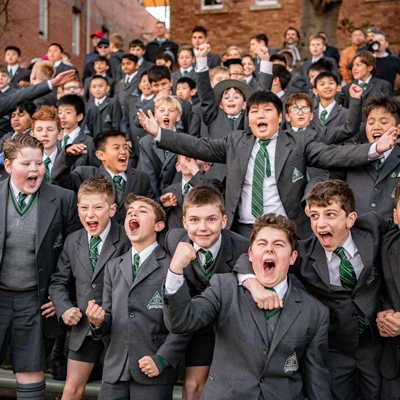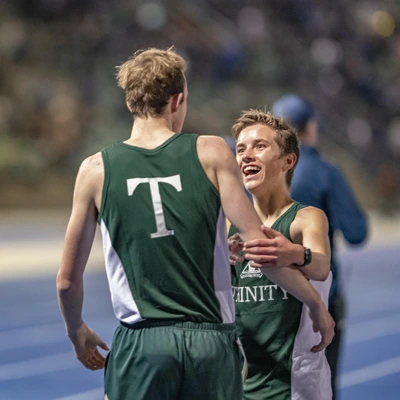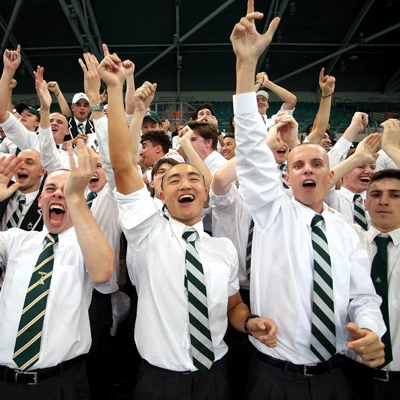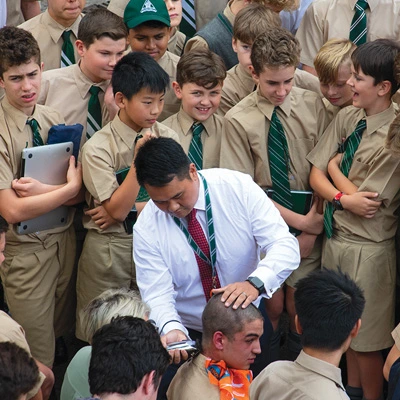The future of arts and music education in NSW
On the 30th of July 2024, the NSW Parliament conducted an inquiry into arts and music education and training in New South Wales, with representatives from a range of arts and education organisations submitting evidence.
The Visual Arts and Design Educators Association of NSW (VADEA NSW) was invited to provide evidence and Trinity’s own Ms Nicole DeLosa (Head of Faculty – Visual Arts) represented VADEA in her capacity as the Co-President of Advocacy and Communication.

Established in 2009, VADEA has grown to become the largest Visual Arts educator association in Australia, coordinating professional learning programs and advocating for NSW Visual Arts and Design educators on state and national curriculum issues.The association actively engages with various external organisations and stakeholders, fostering innovation and professional development in NSW Visual Arts education.
“The inquiry is the first of its kind that I’ve ever known about,” Ms DeLosa says. “It’s really an opportunity to tell the NSW Parliament what’s actually happening in Visual Arts education.”
“I really loved the exercise in reflection that the inquiry provided us. We were able to look at data, reflect on the trends and produce meaningful insights. We talked to other Visual Arts stakeholders that were presenting before us in order to get a more holistic view.”
The diagnosis isn’t positive. While educators remain passionate about Visual Arts, there has been two significant findings – the degradation of Visual Arts in the the K-6 syllabus and the steady and slow decimation of the tertiary Visual Arts sector.
Ms DeLosa acknowledges that this outlook is bleak, but it can’t be ignored.
“There are now only two universities in New South Wales that provide Art Education training and they’re only in Sydney. Any young person in the state who wants to pursue training will either have to come to Sydney, or leave the state entirely. It’s a terrible indictment on the sector, considering New South Wales was a world leader in this area just 20 years ago.”
Also presenting at the inquiry, Academic Kate Coleman spoke on her experiences seeking these tertiary qualifications, explaining that she needed to leave the state just to get a job. Creative industries are thriving, but the pathways to get students there are diminishing.
The data in VADEA’s submission also showed the popularity of Visual Arts for students across the state. Perhaps surprisingly, popularity of Visual Arts at Trinity falls below the state average. Ms DeLosa says it’s a concern, considering the calibre of the opportunities available at Trinity, and it’s a reminder that students – across the state – aren’t able to see the opportunities that lay beyond the School gates.
“It’s made me realise how much I need to show people how Visual Arts education has evolved over the last 20 years, just like everything else,” she says. “We’re in this incredible visual world now. There are more opportunities in the visual and design spaces than ever before: gaming design, concept art, character design … I always share this increase in career opportunities at subject information nights with parents and students.
“The idea that Visual Arts students just want to be artists has been incorrect for almost 30 years. Students just don’t always know what the opportunities are in the world. It really is quite different now.”
Ms DeLosa says that the good news is that Visual Arts opportunities in the international space continue to flourish, and she’s encouraged by the Trinity students who choose to pursue those opportunities.
“For me, the focus is supporting the community to see what opportunities there are for students in this space and to ensure that the students have somewhere to go to see their aspirations realised. If tertiary institutions aren’t providing those spaces, it’s going to become harder and harder.”
Trinity students are proving the depth and breadth of pursuing Visual Arts through their own work and, in particular, through the upcoming Year 12 Visual Arts Exhibition (displayed at the Delmar Gallery 14 August – 18 August 2024). The exhibition showcases the creativity, talent, and dedication of Trinity’s HSC and IB Visual Arts students. Featuring a diverse range of artworks including paintings, drawings, ceramics, sculptures, digital art, film and mixed media, the exhibition is proof that the outdated ideas of Visual Arts are being ushered out the door by imaginative, innovative, and insatiable students.
In VADEA’s submission to the Inquiry, the organisation concluded with these words:
“The Visual Arts are not merely decorative; they are a vital cornerstone of human expression and cultural identity. As evidenced by numerous studies and scholarly works, art plays a pivotal role in shaping our cultural narrative, fostering social cohesion, and challenging societal norms. It serves as a powerful medium for communication across diverse communities, promoting empathy and understanding. By investing in a Visual Arts education, we affirm our society’s commitment to preserving our cultural heritage, nurturing creativity, and advancing our society towards a more cohesive and innovative future. In a climate of diminishing investment in Visual Arts education, this inquiry is essential to highlight emerging issues within Visual Arts education in the curriculum administrative arena and the school-based, societal paradigms that devalue and value arts education while creating an inequitable access to the transformative potential of Visual Arts in building a vibrant and progressive society for generations to come.”
For more information about the Inquiry and to read the submissions, please visit the NSW Parliament website.
















